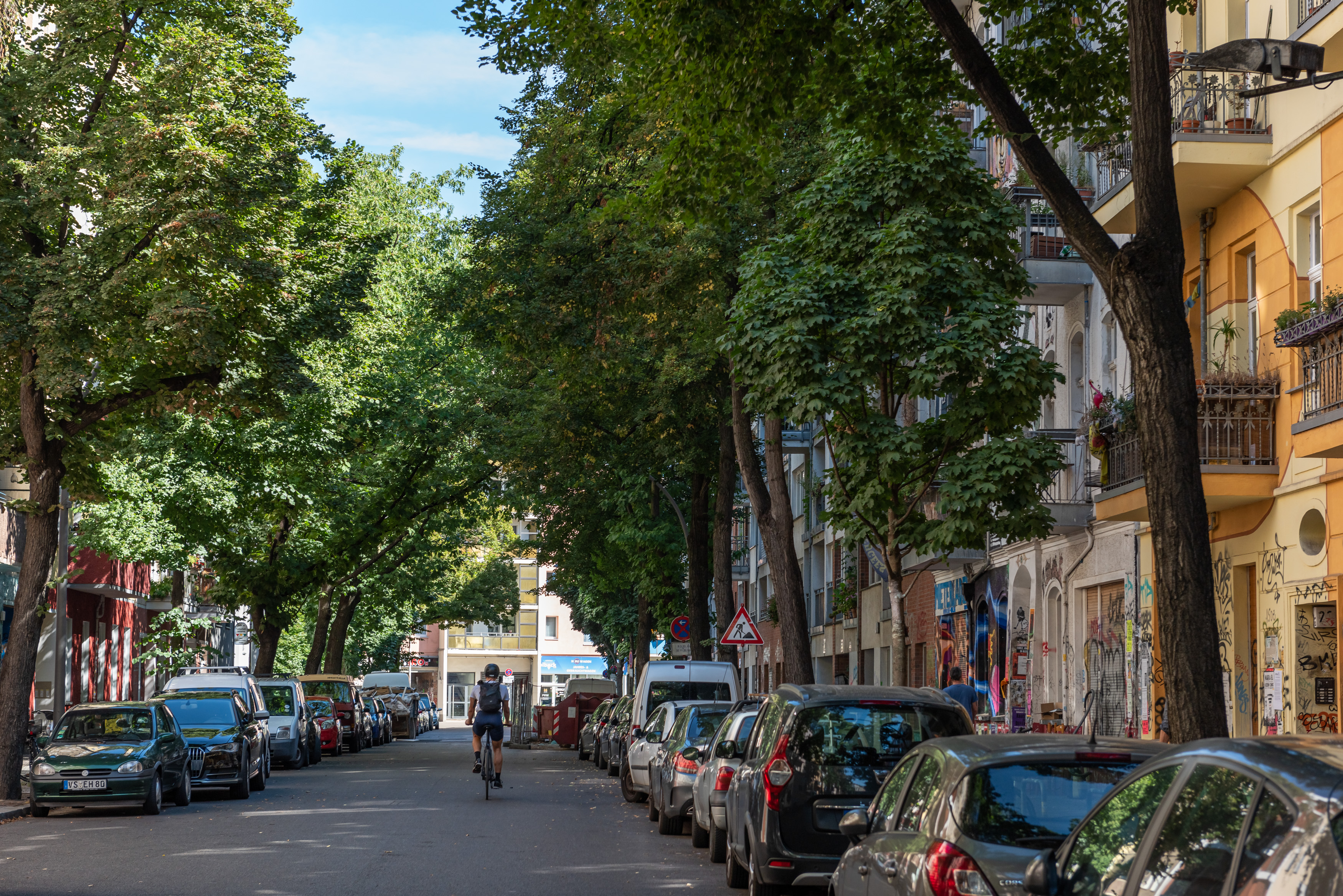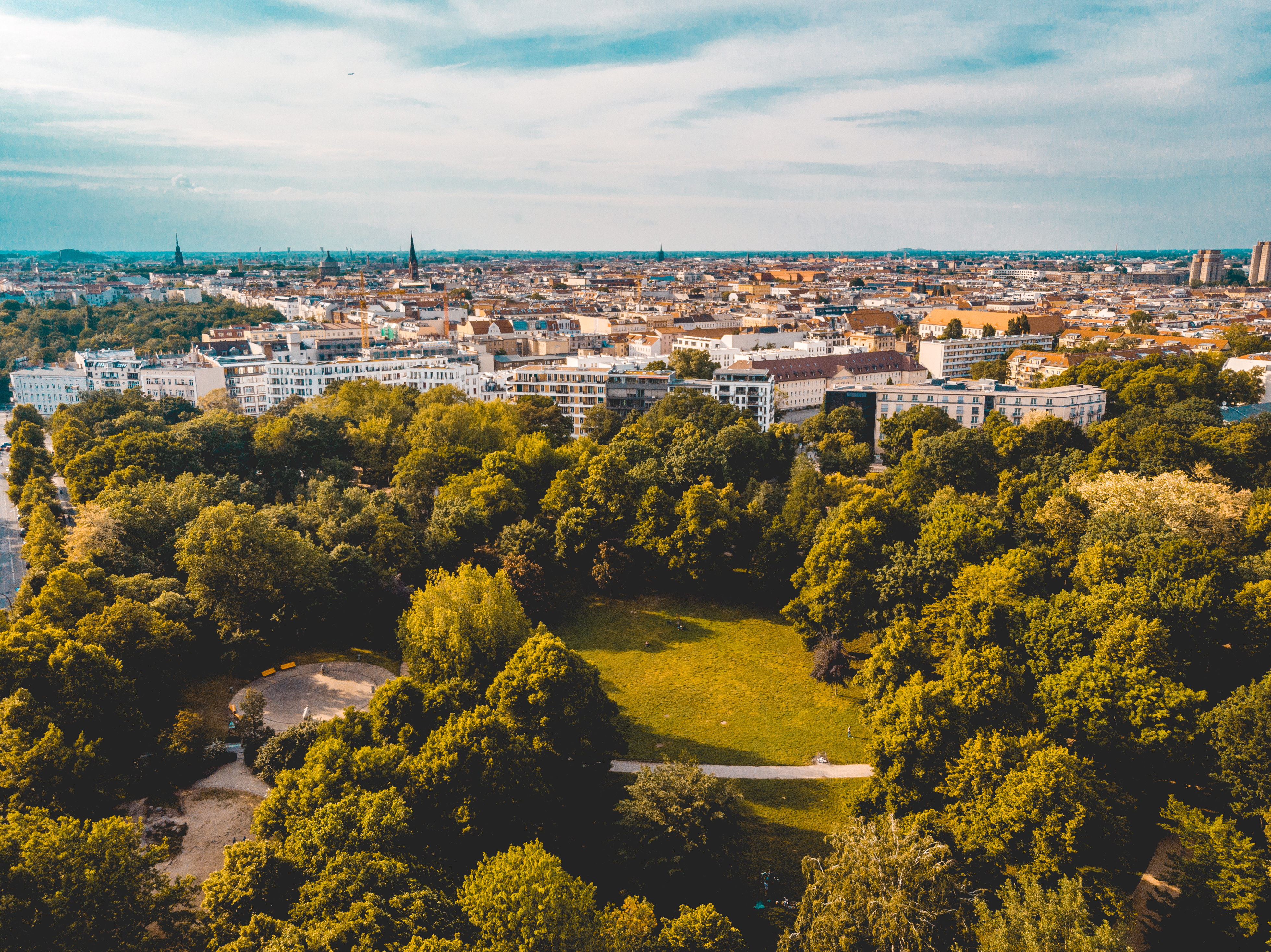Berlin Friedrichshain: development and life in the borough
Friedrichshain is clearly one of the hip and very urban boroughs. Old building charm meets graffiti here and old-established Berliners meet young scene people. In former times a paradise for squatters, nowadays a place for young families and individualists who like the lively big city. Here you can find out everything you need to know about Friedrichshain as a real estate location.

Real estate market in Berlin-Friedrichshain
Friedrichshain is distinguished by a unique mix of architectural styles ranging from pre-war times to the DDR era and the international boom. The cityscape is adorned with pure old-style neighborhoods, prefabricated buildings, and modern new construction projects, where past and present meet, east and west, and modernity and tradition come together. Despite the high housing deficit in almost all neighborhoods, demand is particularly high in streets around Boxhagener Platz, the Samariter neighborhood and at Traveplatz. Additionally, the northern areas along Frankfurter Allee are also developing well.
Existing buildings
Average rental prices
20
EUR / m²
+30.22%
Average purchase prices
6,199
EUR / m²
+7.10%
Rental offers
266
+4.01%
Purchase offers
1,143
+49.27%
New builds
Average rental prices
27.76
EUR / m²
+38.49%
Average purchase prices
9,802
EUR / m²
+8.92%
Rental offers
102
+32.57%
Purchase offers
245
+171.75%
Average rental prices
20
EUR / m²
+30.22%
Average purchase prices
6,199
EUR / m²
+7.10%
Rental offers
266
+4.01%
Purchase offers
1,143
+49.27%
Friedrichshain: Real Estate Supply and Development
The range of real estate on offer in Friedrichshain can be described as large in comparison to other central city districts. But that is a good thing, because new Friedrichshainers continue to flock to the district.
Offer of properties for rent and sale in Friedrichshain-Kreuzberg
How are real estate prices developing in Friedrichshain?
Friedrichshain is one of the most sought-after neighborhoods in Berlin, and accordingly, real estate prices have increased many times over in recent years. This trend will certainly continue in the same way in the coming years.
Purchase price (m²) in Friedrichshain-Kreuzberg
Existing building
Average purchase prices
6,199
EUR / m²
+7.10%
New builds
Average purchase prices
9,802
EUR / m²
+8.92%
Average purchase price Friedrichshain-Kreuzberg
Current rental prices and development
Rental prices in Friedrichshain have skyrocketed in recent years due to the popularity of the district and its excellent, central location. In the coming years, a similarly ongoing development is to be expected.
Average rental prices in Friedrichshain-Kreuzberg
Existing building
Average purchase prices
6,199
EUR / m²
+7.10%
New builds
Average purchase prices
9,802
EUR / m²
+8.92%
The population of the district
The population of the district is colorfully mixed and tends to be younger: 30- to 40-year-olds make up the majority of the population. Approximately 137,000 residents are spread over ten square kilometers, making Friedrichshain the smallest yet most populous district in Berlin.
Migration in Friedrichshain-Kreuzberg
Moves in
Persons
-21.15 %
Moves out
Persons
-4.55 %
In the year 2021, development compared to the previous year
Life in Berlin-Friedrichshain
Your contact to ACCENTRO
Address
ACCENTRO Berlin
Kantstraße 44/45
10625 Berlin











